
Issue #: 167
Published: September / October 2019
- Price per issue - digital : 6.20€Digital magazine
- Price per issue - print : 8.50€Print magazine
- Access to Multihulls World digital archives Digital archives
Still well-preserved, Rodrigues is the smallest and most isolated of the Mascarene Islands. It has volcanic origins and emerges from the Indian Ocean 600 miles to the east of Mauritius and more than 3,000 miles from the coast of Western Australia. The island is only 18km long and 8km wide (11x5 miles). Its highest point is 398m (1,305 feet). As there isn’t much altitude, the island struggles to retain rain water. Fresh water is therefore rare. Steep ravines, dry river beds, black lava slopes and dense grasses – the stage is set!
After a tough 11-day crossing from the Cocos Keeling Islands, Jangada, dropped anchor on the morning of September 14th in the cove of Port-Mathurin. This is the island’s main town and is situated on the north coast. The coral here has been dug out to create a port that’s always accessible, whatever the height of the tide, by the two mixed cargo ships that are responsible for the weekly link with Mauritius.The only naturally deep passage is to the south east of the islands. This was used in former times by vessels making stopovers on Rodrigues, usually to deliver… tortoises, a living food store for the sailors in times past!This is where we moored, unlike the other boats which were safely anchored by Port-Mathurin. I have to admitthat I had a few jitters during the night due to the proximity of the coral when the wind was blowing at 30 knots in our anchorage. However, this was where we spent most of our very pleasant time on the island.
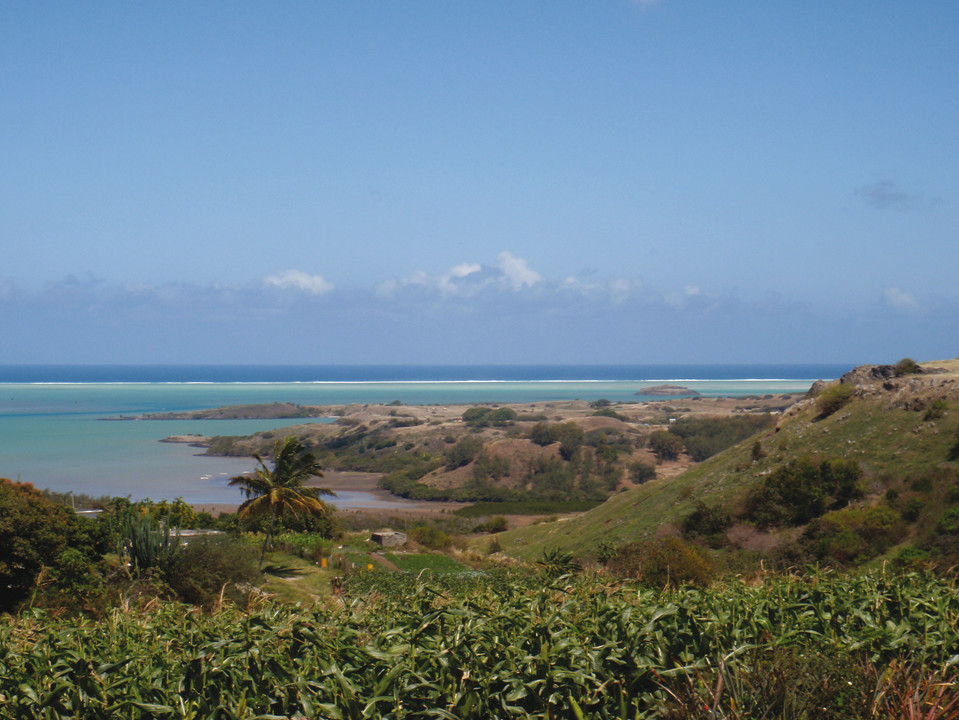
The island is surrounded by a huge lagoon. It is mainly shallow and not navigable except for the numerous fishing pirogues under sail that are everywhere. Even they with their shallow draft use routes known only to the fishermen, and governed by the time and coefficient of the tide.In some areas, the coral reef is 7km (4.5 miles) from the coast while at Cotton Bay, it is only 15 meters(50’)from the shore. There are 18 small islands in the Rodrigues lagoon, some of which, like Hermitage, Destinée, Frégate or Catherine are basalt, whilst others such as the Ile aux Chats or the Ile aux Cocos are coral sand. Rodrigues is an autonomous territory of the Republic of Mauritius. Because of this, the official language of the of the 40,000 Rodriguans is English. However, the Rodriguans speak to each other in Rodriguan Creole, a language which is extremely easy on the ear. Most of the inhabitants also speak French, a souvenir of the past. Traditionally the two main economic activities were farming and fishing.Over the last few years, a selective tourism has developed for people who know what to expect, given that there is very little hotel infrastructure, not much electricity production, a lack of fresh water and slow communications. These drawbacks which do sometimes disturb the peaceful Rodriguan way of life, do have at least one advantage: they have allowed Rodrigues to preserve an authentic character, untouched by mass tourism. It’s the opposite of Mauritius which chose the other route, and the outcome has not always been positive…
In Port-Mathurin you will find the Rue de la Solidarité next to Victoria Street. On the map of the island there are some wonderful names : Camp du Roi, Anse aux Anglais, Pointe La Gueule, Cascade Pistache, Caverne Patate, Ile Paille en Queue, Jardin Mamzelle, Fond La Bonté, Baie Malgache, Rivière Banane, Roche Bon Dieu or Bois Puant…
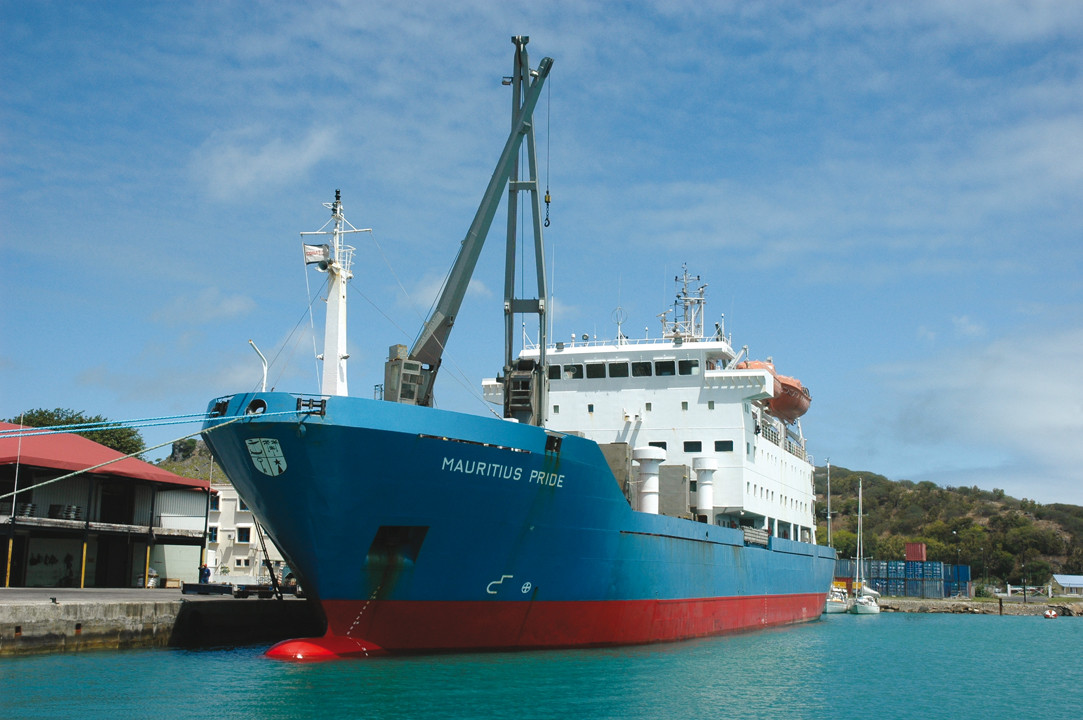
As soon as we stepped ashore, the crew of Jangada hurried off to the charming streets of Port-Mathurin. The dark-skinned Rodriguans stood behind their pretty multi-colored stalls selling spicy local produce. Others were offering wickerwork, hats or bags made out of woven vegetal fibers. Old fashioned shops which smelt of the Tropics jostled for space in the street with mobile phone shops. This is undoubtedly the economic activity that has seen the most growth over the last few years in the most remote parts of the planet!
We found the bakery by following the smell and bought a few baguettes that we shared in the road straight away, chewing greedily. The population of Rodrigues is an historical reflection of the island’s position on the maritime trade routes. The mix of different origins is everywhere, and it is surely this which guarantees that the Mascarenes have an enviable situation regarding civil and religious peace. There are some traits which reveal the origins of the populations: Indians from the Malabar or Keralan coasts, black Africans from the former Portuguese colony of Mozambique, Kenya and Tanzania, Arabs from the east African coast or the Arab peninsula (Somalia, Yemen, Oman), Chinese from the Southern China Sea,Mauritians from the big island, white Creoles who had been arriving for generations on the Ile Bourbon orthe Ile de France, descendants from Breton or Norman sailors who had arrived on ships and been tempted by island life and a few westerners who had fallen under Rodrigues’s spell. Although the Rodriguan creole is easy on the ear, that doesn’t mean that it’s easy to understand. I enjoyed listening to our friend Jérome who had been living on the island for 15 years, conversing with the islanders in this very visual dialect. I started to understand it a bit better, and a few expressions made me smile.Saturday morning is when the big market is held in Port-Mathurin. At first light I heard the last grunts of the animals (a cow, two pigs and a couple of sheep and goats) that were being slaughtered in the old-fashioned way behind the stalls of the small market. They were immediately cut up into bloody pieces, and put up for sale on the stalls.
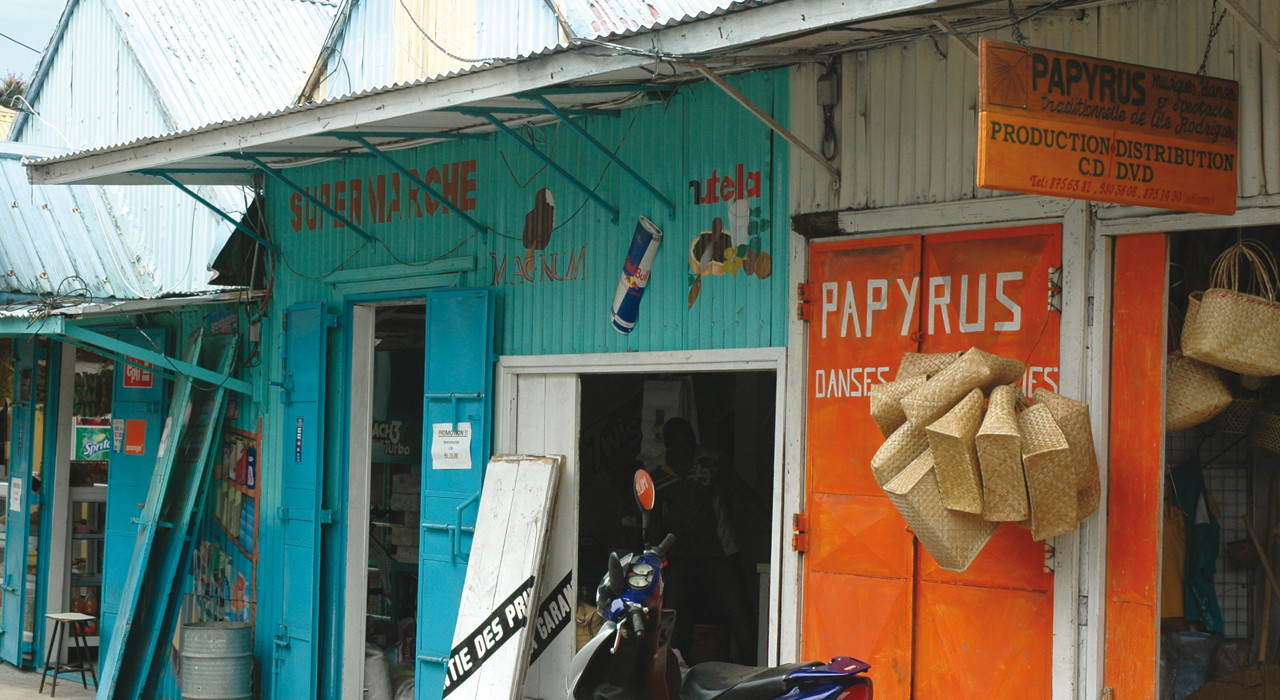
Port-Mathurin’s market is extremely colorful. It’s a pure pleasure to wander around with the sights, sounds and smells assaulting the senses. We did all of our stocking up, with bags in one hand and rupees in the other. Lettuce, tomatoes, cucumbers, carrots, potatoes, cabbage, eggplant, onions, parsley, coriander and thyme, all left our bags groaning. Avocados, bananas, papayas and limes came next. The stalls were full of chilies, ginger, cinnamon and vanilla. We tasted some of the local coconut cakes. Wealso tried the ourite (octopus), which is dried in the sun and wind on Rodrigues and can be kept for weeks. My other half bought some jars of spicy artisanal achards (sliced and preserved foods) which are a Rodriguan specialty. It wasn’t easy to choose between the hundreds of colored pots, all with their own home-made recipes and each one more tempting than the next. Everything that is available on Rodrigues, whether it be fish, seafood, crustaceans, meat or fruit and vegetables, has an “achards” version. It would take us weeks to try out everything! The local artisans also have to compete with the ubiquitous Mauritian competition.Jérome gave us the address of a mixed-race Chinese, who had a little café on the corner of a road by the port. It was his official supplier of sausages, produced in his back room (maybe don’t ask for any details…), and then dried up on the roof by the reliable Trade Winds. There were a few basic tables, some wooden chairs and a counter. Just behind was a butcher’s block and a frightening looking meat grinder which the landlord worked skillfully, right to the edge of his knuckles. I ordered sausage sandwiches that were made to order, topped with dried meat and sweet and sour sauce. It was all encased in a one-size-fits-all local baguette. This little spot, which seems to be a male preserve is apparently only frequented by genuine Rodriguans. They knock back the local beer which is called “Phoenix”. Our next stop was the “Capitaine”, a little restaurant which sells salads and octopus currys. It was a bit of a change from our diet out at sea!
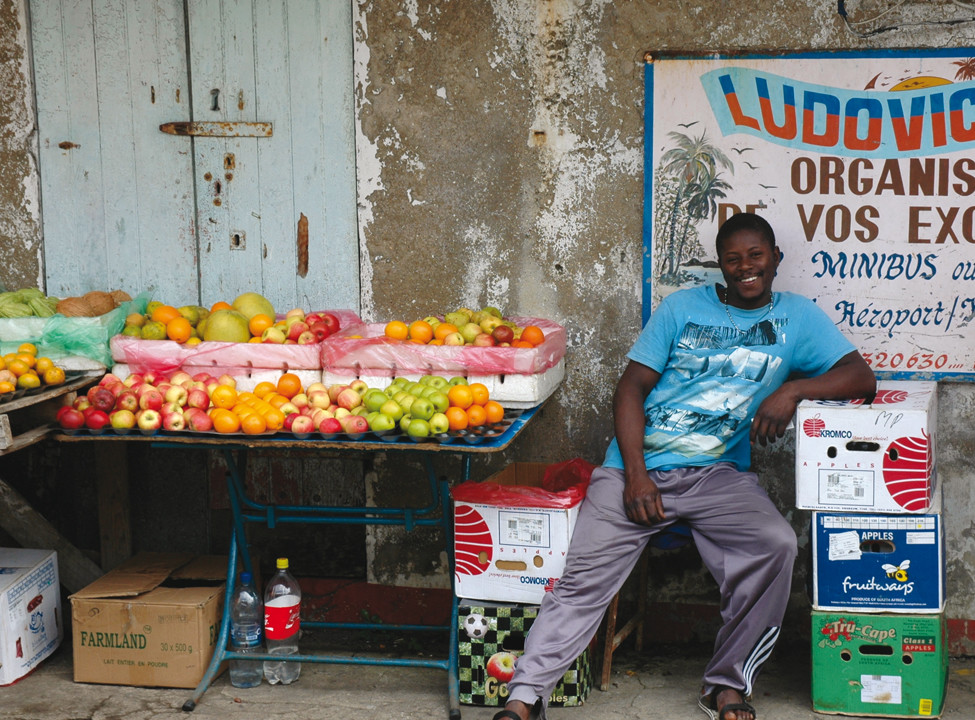
Once a week, the anchorage at Port-Mathurin is the stage for a rather strange event. When the general cargo ship is announced as arriving from Mauritius, the boats which are at the quayside or moored in the port need to get organized and ready to leave the port while the cargo ship is carrying out its maneuvers. These include turning around before berthing. Every boat is up and about early, warming the engines and then the windlasses start. One after the other, the boats take the exit channel and then sail around the blue waters of the lagoon whilst the Mauritius Pride or the Mauritius Trochetiahead through the passage.Soon, the ship turns to the right and takes the small channel that has been cut through the coral, followed by a line of “yachties” heading back to their anchorage. We didn’t have good holding, despite running out 70m (230’)of chain. We came away several times until we found a large areaof soft silt upwind of the port. Nevertheless, we had to temporarily abandon our second, lighter anchor, (a very useful Fortress)whoserodeis rope, apart from the first 20m (65’), whichhad gotstuck on a coral head. We came back up from the south of the island in Jérome’s Toyota pick-up along with our diving gear to get itback after having attached a grappling hook and pulling it with a local pirogue!
We stopped by at the “Cocotiers”, the island’s club, where we were entertained to a few locals banging out a few enthusiastically performed “ségas”. There were obviously a few Rodriguans who enjoyed a boogie on a Sunday afternoon. Afterwards we headed back to the south of the island. Jérome joined us at daybreak, and we got ready to sail around the island via the east side, sailing a few miles against the Trade Winds. The girls preferred to take Jérome’s scooter and head for the Mourouk Cove via the mountain! We sailed for at least half a mile against the swell and then allowed ourselves to be carried alongside the reef, which in this area is very narrow and hugs the coastline. The south east passage isn’t marked. We approached it without any difficulty, pushing towards port and keeping an eye on the breaking waves not far away on the starboard side.Once inside the lagoon, the passage is deep, around 30m (100’), and the approaches are straight.This deep water zone zigzags around the coral with a dark blue color which helped us to follow it from the helm. Weanchored on the dropoff of a secondary stream which drains the east of Mourouk Cove towards the main passage.The coral sand seabed offered good holding, but we were obliged to use the stern anchor too, to avoid us drifting onto the coral if the wind dropped. We were in place and the only sailboat in the south of the lagoon.
When our GRIB files started forecasting 48 hours of stronger winds, we moved Jangada into the lee of the Ilôt Hermitage, a little further into the lagoon. Although we had 80m (270’)of chain out, with good holding in firm silt, Marin and I still added a second anchor which we took down with the dinghy to the coral ring which spilled out from the island. There were 20m (65’) of chain and 100m (330’)of weighted lineas well as a third anchor thrown down 100m (330’)behind the boat. The current could be strong in this location and when the gusts would be hitting 35 knots in the squalls as the front passes over in the middle of the night, I probably wouldn’t get much sleep, as I would be too busy listening to the sounds of the two forward anchor lines. I tried for hours to work out the sounds in the midst of the cacophony of the sea breaking on the coral around us… The first light of day reassured me, although the fatigue from not sleeping and the tension that had built up during the night really hit me, just as the rest of the crew were starting to wake up after a good, stress-free night’s sleep…
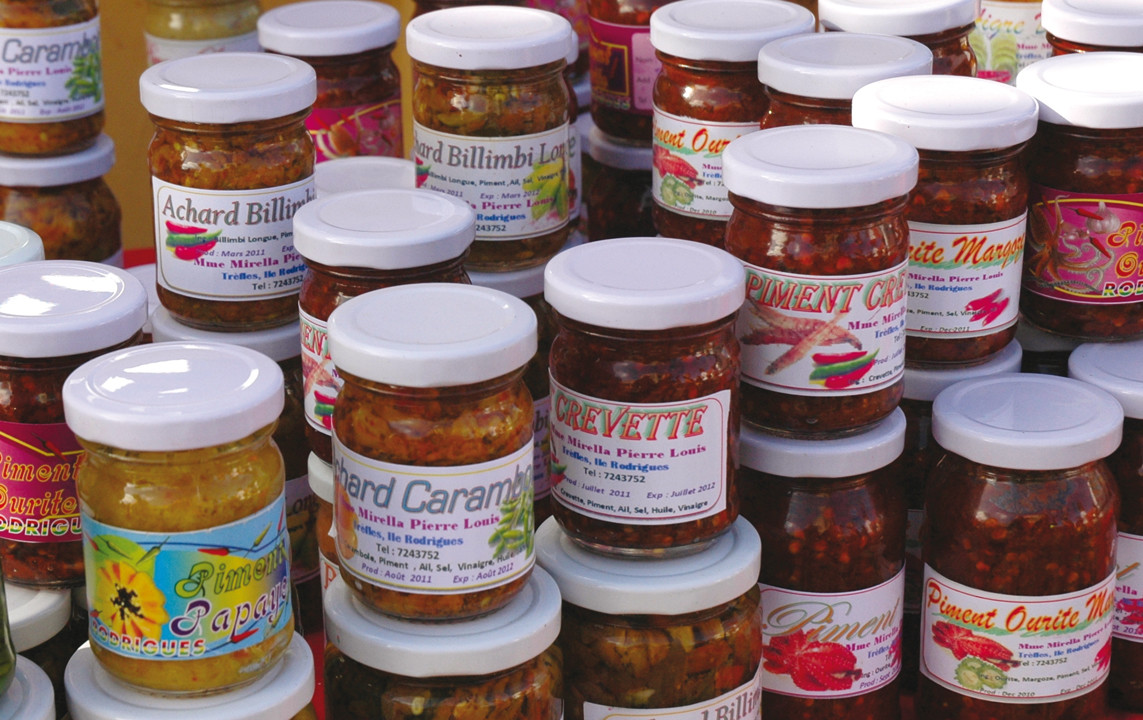
From our anchorage just off Ilot Hermitage, I never got tired of watching the Rodriguan sailing pirogues. It was a daily event that was a feast for the eyes. From dawn to dusk and sometimes beyond, the south of the island’s fishermen fizzed around the lagoon, usually 2 or 3 per pirogue. They followed the same routes that had been taken since the dawn of time, with always just enough depth of water to ensure that they made their fishing grounds or to get back home. They would fish on foot, on the reef flatssearching for octopus, with water up to their waists and with their craft attached via a grappling hook and the sails and mast taken down. When line fishing, they would catch bonitoand jacks, and sometimes, working as a group of around ten pirogues, they would use woodcreels and nets secured togetherto form a large net. After the chaos of all the water beating when the net tightens, the pirogues then separate the individual netsand then sail to the small cove in the lee of Hermitage where they will recover their catch and clean the nets.
While we were in the south of the lagoon, I took great pleasure in reading the book “Voyage to Rodrigues”, by J. M. G. Le Clézio…
“Everything is there, immobile for so many years. Immobile for eternity it seems, as though the black stones and the bushes, the vacoas and the aloes have been there forever… The fiery sun, the cloudless sky, the dark blue sea edged with surf along the reefs, the black lava, the acacia thickets, the tamarind trees and the scrub flattened by the wind… The sea is the only place on earth where we can be isolated and surrounded by our own dreams. At once lost and close to our inner selves”.
It was already two weeks since we had arrived in Rodrigues. Our stay in the south of the island was coming to an end. Each time that we came back from Port-Mathurin in the back of Jérome’s flatbed Toyota or on his scooter, we were thrilled to see the silhouette of Jangada at anchor by Ilot Hermitage. The southern Rodriguans were starting to get used to seeing this cruising catamaran as part of the lagoon’s seascape. I even started thinking that this could last forever, such was the tranquility of life on Rodrigues…
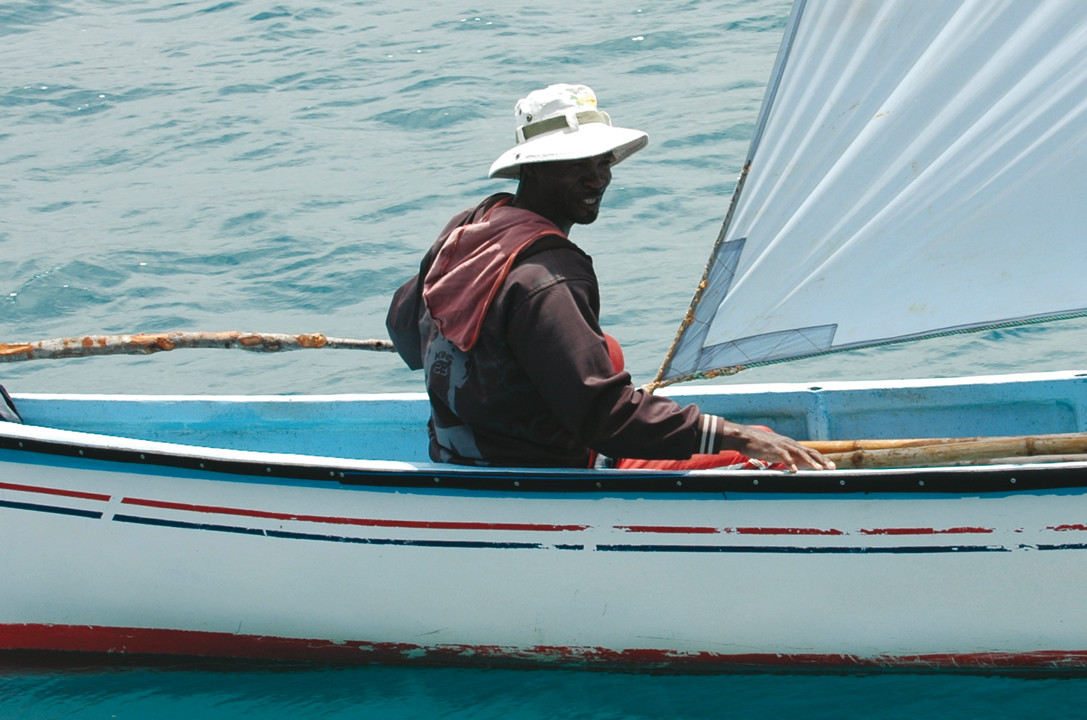
What readers think
Post a comment
No comments to show.